
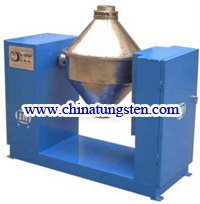 Modern tungsten alloy manufacture process methods dissolve sheltie and wolfram concentrates by an alkaline pressure digestion, using either a soda or a concentrated NaOH solution. The sodium tungsten solution obtained is purified by precipitation and filtration, before it is converted into an ammonium tungsten solution. This stage is carried out exclusively by solvent extraction or ion exchange resins.
Modern tungsten alloy manufacture process methods dissolve sheltie and wolfram concentrates by an alkaline pressure digestion, using either a soda or a concentrated NaOH solution. The sodium tungsten solution obtained is purified by precipitation and filtration, before it is converted into an ammonium tungsten solution. This stage is carried out exclusively by solvent extraction or ion exchange resins.
Due to tungsten heavy alloy’s extremely high melting point, tungsten mill products (sheet, rod, wire, pins) are fabricated from powder and not through melting and casting.
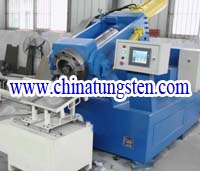 The powder metallurgy is the main tungsten alloy manufacture process. Tungsten alloy powder is pressed into parts, sintered (consolidated) and worked (rolled, forged, swaged, or wire drawn) to the desired form.
The powder metallurgy is the main tungsten alloy manufacture process. Tungsten alloy powder is pressed into parts, sintered (consolidated) and worked (rolled, forged, swaged, or wire drawn) to the desired form.
This technology was adopted from ceramics processing and used for a first time first for mass production of tungsten filaments at the dawn of the 20th century.
The tungsten alloy manufacture process of powder metallurgy
comprises a family of production technologies, which tungsten alloy process a feedstock in powder form to manufacture components of various types. These production technologies generally involve all or most of the following process steps:
Tungsten alloy process-1. Powder production
Tungsten alloy process-2. Mixing of powders
This can often involve the introduction of alloying additions in elemental powder form or the incorporation of a pressing lubricant.
Tungsten alloy process-3. Forming of the mixed powder into a compact form.
The dominant consolidation process involves pressing in a rigid toolset, comprising a die, punches and, possibly, mandrels or core rods. However, several other consolidation processes are used in niche applications.
Tungsten alloy process-4. Sintering of the compact to enhance integrity and strength
This step involves heating of the material, usually in a protective atmosphere, to a temperature that is below the melting point of the major constituent. In some cases, a minor constituent can form a liquid phase at sintering temperature; such cases are described as liquid phase sintering. The mechanisms involved in solid phase and liquid phase sintering are discussed briefly in a later section.
Tungsten alloy process-5. Secondary operations
The finishing processes to the sintered part. In the powder metallurgy industry, such processes are often referred to as “secondary operations”.
Usually, different technique would make different properties. For more details about technique, please visit tungsten alloy manufacture process.
The following equipment is used in the production process: ball crusher, tumbling mixer, vacuum sintering furnace, extruding machine, cool isostatic pressing and hot isostatic pressing.
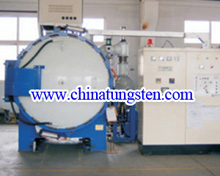
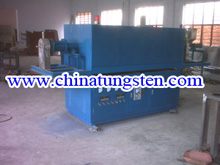
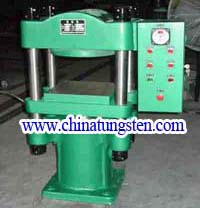
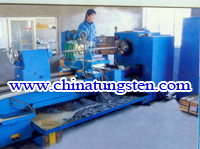
Please do not hesitate to contact us if you have any question about tungsten alloy manufacture process. Our e-mail address is sales@chinatungsten.com sales@xiamentungsten.com. Or you can call us on 0086 592 5129595/5129696/5127878.